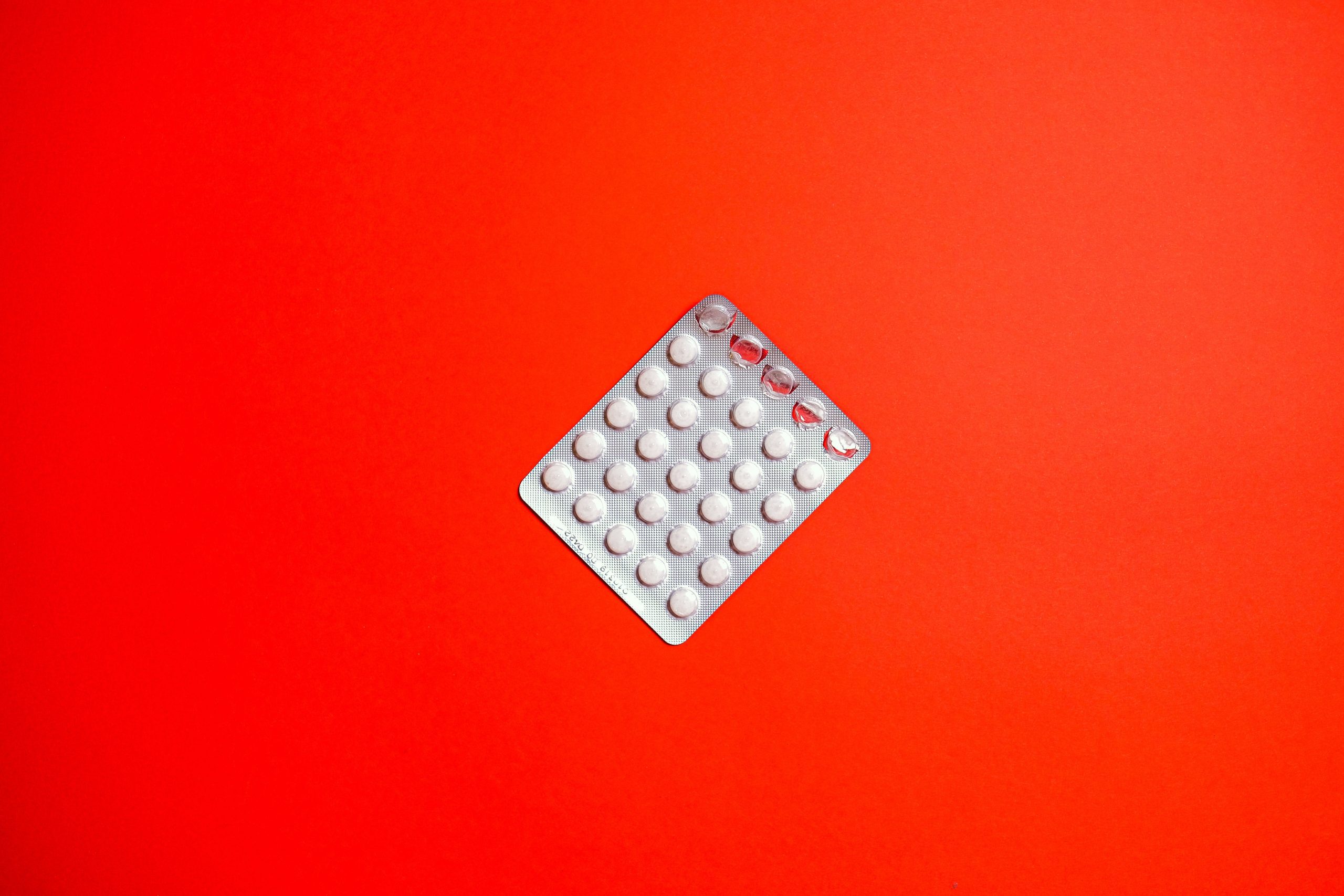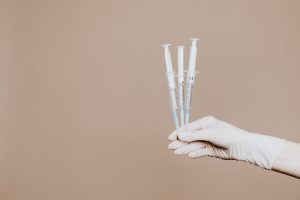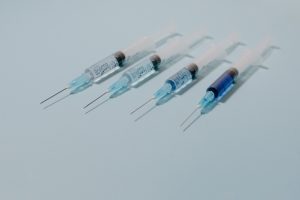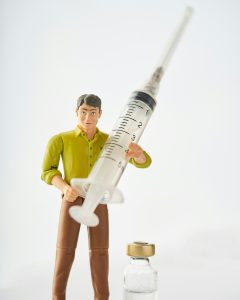
- What Is Loratadine?
- Brief History of Loratadine
- How to Use Loratadine?
- What Should Be Done If an Overdose Occurs?
- To Whom Is It Contraindicated?
- Interactions with Other Medications
- Available Forms
- Famous Loratadine Brands
- Why Do People Use It In Sports?
- Websites and Articles to Delve into the Benefits of Loratadine
- Disclaimer
What Is Loratadine?
Loratadine is an antihistamine medication commonly used to relieve symptoms associated with allergic conditions. It is often used to treat symptoms such as sneezing, runny nose, itching, and watery eyes caused by hay fever (allergic rhinitis) or other respiratory allergies. Loratadine works by blocking the action of histamine, a substance in the body that contributes to allergy symptoms.
Loratadine is available over-the-counter and is sold under various brand names. It is considered a non-sedating or low-sedating antihistamine, which means it is less likely to cause drowsiness compared to some older antihistamines.
Brief History of Loratadine
Loratadine, a second-generation antihistamine commonly used to treat allergies, has a history that spans several decades. Here’s a brief overview:
- Discovery and Development:
- Loratadine was discovered and developed by the pharmaceutical company Schering-Plough (now part of Merck & Co.).
- It was first synthesized in the late 1970s.
- Introduction to the Market:
- Loratadine was introduced to the market in the early 1990s.
- Its approval for over-the-counter (OTC) use followed its initial introduction as a prescription medication.
- Mechanism of Action:
- Loratadine is a non-sedating antihistamine that works by selectively blocking the H1 histamine receptor.
- Unlike first-generation antihistamines, loratadine has minimal penetration of the blood-brain barrier, resulting in fewer central nervous system side effects.
- Brand Names and Formulations:
- Loratadine is commonly known by the brand name Claritin.
- It is available in various formulations, including tablets, chewable tablets, and liquid forms.
- Over-the-Counter Status:
- After gaining popularity as a prescription medication, loratadine transitioned to being available over the counter.
- Its OTC availability has contributed to its widespread use for allergy relief.
- Generic Availability:
- As the patent for branded loratadine expired, generic versions became widely available, offering more affordable options to consumers.
- Global Use and Recognition:
- Loratadine is used globally and is recognized as a second-generation antihistamine with a favorable safety profile.
- It is commonly recommended for the treatment of allergic rhinitis (hay fever) and other allergic conditions.
This summary provides a brief overview of loratadine’s discovery, development, introduction to the market, and its role as a widely used antihistamine for allergy relief. We present a summarized history of Loratadine in a table format:
| Year | Event |
|---|---|
| Late 1970s | Loratadine synthesized by Schering-Plough. |
| Early 1990s | Introduction of loratadine to the market. |
| Features | Description |
| Mechanism of Action | Selective blocking of the H1 histamine receptor. Minimal penetration of the blood-brain barrier. |
| Formulations | Available in tablets, chewable tablets, and liquid forms. |
| Brand Names | Marketed under various brand names, with Claritin being prominent. |
| Usage | Details |
| Indications | Used for allergy relief, particularly in treating allergic rhinitis (hay fever). |
| Over-the-Counter | Initially available as a prescription medication, later transitioning to over-the-counter (OTC) status. |
| Generic Availability | Generic versions become available after the expiration of patents. |
| Global Use | Used globally and recognized as a second-generation antihistamine. |
This table provides a concise overview of key events, features, usage, availability, and ongoing developments in the history of Loratadine.
How to Use Loratadine?
To use loratadine effectively, follow these general guidelines. However, it’s crucial to consult the specific instructions on the product packaging or your healthcare provider’s recommendations for your individual case:
- Read the Instructions:
- Carefully read the instructions provided on the packaging of the loratadine product you have purchased. Pay attention to any specific dosage recommendations and usage instructions.
- Dosage:
- Take loratadine as directed by your healthcare provider or as indicated on the product packaging. The typical dosage is one tablet (usually 10 mg) once a day.
- Swallow Whole:
- Swallow the loratadine tablet whole with a full glass of water. Do not crush, chew, or break the tablet unless directed otherwise.
- Timing:
- Take loratadine at the same time each day for consistent allergy relief. If you forget a dose, take it as soon as you remember. However, if it’s almost time for your next dose, skip the missed dose and continue with your regular schedule.
- Food and Drink:
- Loratadine can be taken with or without food. You can take it with a meal if it helps prevent any potential stomach discomfort.
- Avoid Certain Substances:
- Avoid consuming grapefruit juice or grapefruit-containing products while taking loratadine, as they may interact with the medication.
- Interactions:
- Inform your healthcare provider about any other medications, supplements, or herbal products you are taking to ensure there are no potential interactions with loratadine.
- Consult with a Healthcare Provider:
- If you have liver or kidney problems, it’s advisable to consult with your healthcare provider before using loratadine.
- Monitor for Side Effects:
- Be aware of potential side effects such as drowsiness or dizziness. While loratadine is considered non-sedating or low-sedating, individual reactions may vary.
- Pregnancy and Breastfeeding:
- If you are pregnant, breastfeeding, or planning to become pregnant, consult with your healthcare provider before using loratadine.
Always follow your doctor’s recommendations, and if you have any concerns or questions about the use of loratadine, seek guidance from your healthcare provider. It’s important to note that individual cases may vary, and personalized advice from a healthcare professional is essential.
What Should Be Done If an Overdose Occurs?
If you suspect an overdose of loratadine or any medication, it is crucial to seek immediate medical attention. An overdose can lead to serious complications and may require emergency medical intervention. Here are the general steps to take if an overdose occurs:
- Call Emergency Services:
- Dial emergency services (911 or your local emergency number) immediately to seek professional medical help.
- Provide Information:
- Be prepared to provide information about the person, the medication taken (loratadine), and the suspected amount of the overdose.
- Do Not Delay:
- Do not wait for symptoms to worsen before seeking help. Quick medical intervention is essential in cases of overdose.
- Symptom Monitoring:
- While waiting for emergency medical services, monitor the person’s vital signs (breathing, pulse, consciousness). If they become unconscious or stop breathing, initiate CPR if you are trained to do so.
- Do Not Try to Induce Vomiting:
- Do not try to induce vomiting unless directed by emergency personnel. In some cases, inducing vomiting can cause more harm.
- Provide Information to Medical Professionals:
- If possible, provide medical professionals with details about the loratadine overdose, including the amount taken, the time of ingestion, and any other relevant information.
- Bring Medication Packaging:
- If available, bring the packaging of the loratadine medication to the hospital. This can help medical professionals identify the specific formulation and dosage.
- Follow Medical Advice:
- Follow the advice and instructions of healthcare professionals. They will determine the appropriate treatment based on the severity of the overdose and the individual’s condition.
It is crucial to remember that an overdose, even with medications considered relatively safe like loratadine, can have serious consequences. Prompt medical attention is essential for the best possible outcome. If you are unsure about the severity of the situation, err on the side of caution and seek medical help immediately.
To Whom Is It Contraindicated?
Loratadine is generally considered safe for most people, but there are certain conditions and situations in which it may be contraindicated or should be used with caution. It’s important to consult with a healthcare professional before taking loratadine, especially if you have any of the following conditions:
- Allergic Reaction:
- If you have had an allergic reaction to loratadine or any similar antihistamines, it is contraindicated.
- Liver Disorders:
- Individuals with severe liver disorders should use loratadine with caution, as the liver plays a role in metabolizing the drug. Dose adjustments may be necessary.
- Pregnancy and Breastfeeding:
- Although loratadine is generally considered safe during pregnancy and breastfeeding, it’s advisable to consult with a healthcare provider before use.
- Renal Impairment:
- Individuals with severe kidney problems should use loratadine cautiously, as the drug and its metabolites are excreted through the kidneys.
- Elderly Individuals:
- Older adults may be more sensitive to the side effects of loratadine, such as drowsiness or dizziness. A lower dose or close monitoring may be recommended.
- Alcohol Consumption:
- Drinking alcohol while taking loratadine may enhance the sedative effects of the drug. It’s advisable to limit or avoid alcohol consumption during loratadine use.
- Other Medications:
- Inform your healthcare provider about all medications, including prescription, over-the-counter, herbal supplements, and vitamins, as loratadine may interact with certain drugs.
- Epilepsy or Seizure Disorders:
- Loratadine may lower the seizure threshold in some individuals. If you have a history of epilepsy or seizure disorders, consult with your healthcare provider before using loratadine.
- Eye Conditions:
- Individuals with certain eye conditions, such as glaucoma, should use loratadine with caution, as antihistamines may exacerbate these conditions.
- Urinary Retention:
- Loratadine may cause urinary retention in some individuals. If you have difficulty urinating or other urinary issues, consult with your healthcare provider.
Always consult with a healthcare professional before using loratadine, especially if you have pre-existing medical conditions or are taking other medications. Your healthcare provider can provide personalized advice based on your health status and help determine if loratadine is safe for you.
Interactions with Other Medications
Loratadine may interact with other medications, potentially affecting how each drug works or increasing the risk of side effects. It’s essential to inform your healthcare provider about all medications, including prescription drugs, over-the-counter medications, vitamins, and herbal supplements, that you are taking. Here are some common interactions with loratadine:
- Cimetidine:
- Cimetidine, used to treat heartburn and stomach ulcers, may increase the levels of loratadine in the blood, leading to a higher risk of side effects. Consult with your healthcare provider before using these medications together.
- Ketoconazole or Erythromycin:
- Antifungal medications like ketoconazole or certain antibiotics like erythromycin may increase the blood levels of loratadine. Your healthcare provider may need to adjust your loratadine dosage if you are taking these medications.
- Rifampin:
- Rifampin, an antibiotic, may decrease the blood levels of loratadine. Your healthcare provider may need to monitor you for reduced loratadine effectiveness.
- Barbiturates and Sedatives:
- Loratadine may increase the sedative effects of barbiturates and other central nervous system depressants. Use caution when taking loratadine with these medications.
- Other Antihistamines:
- Concurrent use of loratadine with other antihistamines may lead to an increased risk of side effects, including excessive drowsiness.
- Medications Affecting the Liver:
- Drugs that affect liver enzymes, such as certain antifungals, antibiotics, and antiretrovirals, may impact the metabolism of loratadine. Dose adjustments may be necessary.
- Certain Anti-seizure Medications:
- Loratadine may lower the seizure threshold, and concurrent use with certain anti-seizure medications may increase the risk of seizures.
- Selective Serotonin Reuptake Inhibitors (SSRIs):
- Combining loratadine with certain SSRIs, commonly used to treat depression and anxiety, may increase the risk of serotonin syndrome. This is a potentially life-threatening condition that requires immediate medical attention.
- Alcohol:
- Alcohol may enhance the sedative effects of loratadine. It’s advisable to limit or avoid alcohol consumption while taking loratadine.
Always consult with your healthcare provider before starting or stopping any medications while using loratadine. They can provide personalized advice based on your medical history and help you manage potential interactions safely.
Available Forms
Loratadine is commonly available in various forms to cater to different preferences and needs. The primary forms of loratadine include:
- Tablets:
- Loratadine tablets are the most common and widely available form. They come in different strengths, with 10 mg being a standard dosage for adults.
- Chewable Tablets:
- Chewable loratadine tablets are designed to be chewed before swallowing, offering a more palatable option, especially for individuals who have difficulty swallowing pills.
- Orally Disintegrating Tablets (ODT):
- Loratadine ODTs are tablets that dissolve quickly in the mouth without the need for water. This form is convenient for those who may have difficulty swallowing traditional tablets.
- Liquid/Syrup:
- Loratadine is available in liquid or syrup form, which can be particularly useful for children or individuals who prefer a liquid medication. It often comes with a measuring device for accurate dosage.
- Capsules:
- Some formulations of loratadine are available in capsule form, although tablets are more commonly used.
- Combination Products:
- Loratadine is also found in combination with other medications, such as decongestants (e.g., loratadine/pseudoephedrine), to provide relief from multiple allergy symptoms.
When choosing a specific form of loratadine, consider factors such as ease of use, personal preferences, and the age of the individual taking the medication. The dosage and administration instructions may vary depending on the form of loratadine, so it’s crucial to follow the recommendations provided by healthcare professionals or indicated on the product packaging.
Always consult with a healthcare provider or pharmacist if you have any questions or concerns about the appropriate form and dosage of loratadine for your specific situation.
Famous Loratadine Brands
Loratadine is a widely used antihistamine, and there are several brand names under which it is marketed. Some of the well-known loratadine brands include:
- Claritin:
- mClaritin is one of the most recognized brand names for loratadine. It is available in various formulations, including tablets, chewable tablets, and syrup.
- Alavert:
- Alavert is another brand of loratadine, offering various forms such as orally disintegrating tablets (ODT) and non-drowsy 24-hour relief.
- Allergy Relief:
- Many store or generic brands market loratadine under the name “Allergy Relief.” These are often more affordable options that contain the same active ingredient.
- Wal-itin:
- Wal-itin is the Walgreens brand of loratadine, available in different forms like tablets and liquid.
- Kirkland Signature AllerClear:
- Kirkland Signature is Costco’s brand, and they offer an allergy relief product containing loratadine.
- Leader Aller-Ease:
- Leader is a brand that offers loratadine under the name “Leader Aller-Ease,” available in various forms.
- GoodSense All Day Allergy:
- GoodSense is a brand that provides affordable loratadine options, including tablets and syrup.
- Up & Up Allergy Relief:
- Up & Up is the Target store brand, and they offer loratadine under the name “Up & Up Allergy Relief.”
It’s important to note that while the active ingredient (loratadine) is the same across these brands, the inactive ingredients and formulations may vary. Always read the product packaging, follow the recommended dosage instructions, and consult with a healthcare professional if you have any questions or concerns about which brand to choose or how to use loratadine safely.
Why Do People Use It In Sports?
Loratadine, an antihistamine commonly used to treat allergy symptoms, is not typically used for sports performance enhancement. However, there may be some misconceptions or confusion regarding the use of antihistamines in sports. Here are a few reasons why athletes might use or consider using antihistamines, including loratadine:
- Allergy Relief:
- Athletes, like anyone else, may suffer from allergies. Pollen, dust, or other allergens can trigger allergic reactions, causing symptoms such as sneezing, runny nose, and itchy eyes. Loratadine, with its antihistamine properties, can help alleviate these symptoms.
- Exercise-Induced Allergies:
- Some individuals may experience allergies triggered by exercise or physical activity, a condition known as exercise-induced allergies. In such cases, loratadine may be used to manage symptoms and allow athletes to engage in sports comfortably.
- Non-Drowsy Formulation:
- Loratadine is classified as a non-sedating or low-sedating antihistamine. Unlike some older antihistamines, it is less likely to cause drowsiness. Athletes may prefer non-drowsy options to maintain alertness during sports activities.
- Potential for Reduced Nasal Congestion:
- In cases where athletes have nasal congestion due to allergies, loratadine may help reduce congestion, allowing for improved breathing and comfort during physical exertion.
It’s important to note that the use of medications, including loratadine, should be approached with caution in the context of sports. Athletes should be aware of anti-doping regulations and the specific guidelines of sports organizations regarding the use of certain medications. Some substances, even those available over-the-counter, may be prohibited in competitive sports.
Before using any medication, athletes should consult with their healthcare providers to ensure that the chosen treatment is safe, in compliance with anti-doping rules, and suitable for their individual health needs.
Websites and Articles to Delve into the Benefits of Loratadine
Loratadine is an antihistamine commonly used to relieve symptoms associated with allergic conditions. It works by blocking the action of histamine, a substance in the body that causes allergy symptoms. Here is some information from various sources:
- MedlinePlus:
- MedlinePlus – Loratadine provides general information on loratadine, including its uses, precautions, and side effects.
- NHS (National Health Service, UK):
- NHS – Loratadine offers information on loratadine, its uses, dosage instructions, and potential side effects.
- WebMD:
- WebMD – Loratadine provides details on loratadine’s uses, side effects, and important information about its dosage.
- Drugs.com:
- Drugs.com – Loratadine offers comprehensive information on loratadine, including its uses, side effects, and interactions with other drugs.
- Wikipedia:
- Wikipedia – Loratadine provides an overview of loratadine, including its mechanism of action, history, and uses.
- Cleveland Clinic:
- Cleveland Clinic – Loratadine provides information on loratadine in capsule or tablet form, including usage and precautions.
- Mayo Clinic:
- Mayo Clinic – Loratadine offers information on loratadine, including its uses and considerations before using.
- Healthline:
- Healthline – Loratadine Oral Tablet provides details on loratadine’s oral tablet form, including drug images.
- GoodRx:
- GoodRx – Loratadine offers information on loratadine and its availability, including pricing details.
- Poison Control:
- Poison Control – Loratadine provides information on loratadine in the context of poison control, discussing potential risks and management.
- Everyday Health:
- Everyday Health – Loratadine provides information on loratadine, including its uses and potential side effects.
These sources collectively provide a comprehensive overview of loratadine, covering its uses, safety considerations, potential side effects, and other relevant information. Always consult with a healthcare professional for personalized advice based on your specific health needs.
Disclaimer
The information is solely provided for educational purposes. It is not intended to diagnose, treat, cure, or prevent any disease. Seek the advice of your physician or qualified healthcare provider with any questions you may have regarding a medical condition at all times. Never disregard professional medical advice because of something you have read or learned from this article.






